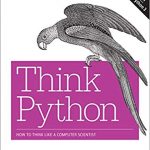Never forget that securities exchanges are the most intense battlefield for money in the world.
1. Lose money to understand
How do you call it to understand? It is to know the huge risks, and then according to the plans, according to the ideas, to lose money according to the expectations.
This seems to be unpleasant, and it is like telling a joke, but it is not. I am not asking you to intentionally and actively to lose money.
The purpose is of course to make money. What I am saying is that every time we should have a specific plan: If the market goes back at which price, how much will be lost when leaving the market. It is sensible to admit defeat of a battle. But it does not mean that we lost the entire war. Don’t worry, the opportunities behind will come one after another, as long as we still have the strength and will to win at any time.
What I mean “lose money to understand” also includes: You should understand in advance, after you lose the money, what is the impact on your overall trading operation, whether it has a major impact, and what adjustments are needed in strategy and tactics. It also includes an impact on the mindset.
2. “losing money” must make sense.
Not every position of “losing-money” in the market is a bad position, nor a “making-money” position is it a good position. A professional trader must earning by meanings, losing by reasons.
What is losing by reasons? First of all, the proportion of profit risk should be reasonable, that is, how much the risks are willing to take for seeking profit.
For example: If the market is reversed, it is ready to pay 30,000 to leave the market. If you are right, you can earn 3,000 before you reach the next resistance and support. Is this a good reason to enter the market?
If the market goes against you, you really lose money and leave, so I think that you are unreasonable because you risked ten times more than the profit you are looking for. It seems that you completely forgot the idea of using the small money to acquire the big profits.
You are using the big money to acquire the small profit, even if you make nine consecutive profits, it will not enough for losing in the long run.
Besides, how much will you can be grasping the continuous profit? With this kind of thinking, the winning and losing odds have already determined before you enter the market.
If you reverse the profit-risk ration, don’t you think that the losing is more reasonable?
Secondly, the price of the stop loss should be set after an effective support and resistance level, that is to say, you should identify a pass for your exit, so that you have a reason to stay on duty.
This pass is a long and short position battle for a fierce price, where we can verify the development trend of the overall situation at a very small cost. In these fiercely contested gates, the classics of the futures market are often staged.
If it is a rushing upswing market and a sharp downturn, you want to follow the trend, and neither of these two conditions has any reference value. How to do?
1. Small amount position follow-up with the market continues trend, which will whether evolved in the expected direction or not, then you can gradually increase or decrease the position, the main concern is to control the risk.
2. The trend momentum is slightly reversed or stagnant, you need decisively leave the market without hesitate on any profit or loss. We must remember that no matter what kinds of market, we all dare to jump in, because we can control the risk decisively.
Some people say that the operation should be daring, and some people say that it should be stable. In fact, they are all right, the overall stability, partial boldness. The overall stability, individual boldness. Both are indispensable.
How many times you make a profit in the futures market is not very meaningful. The significance of making small money is not great. You must not take big risks to win small profits. Don’t make a loss that won’t cover multiple time profits.
Never use the purpose of making small money for market deployment and operations.
The ultimate goal of “using the small money to acquire the big profits” is to make a huge profits in the market. “Seeing the benefits and leaving” not only violates the principle of “big profits”, but also does not reduce your risk.
The profit target should be set at 100% of the total margin – the ability to withdraw the principal to win.
The market always has vibrations. Don’t be shocked by a slight shock to escape and miss the opportunity to make big money.
Never forget that securities exchanges are the most intense battlefield for money in the world.





